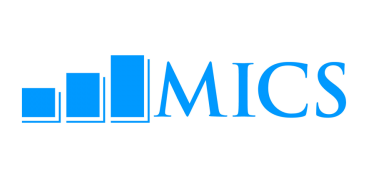Difference between revisions of "Survey Library / Standards: WASH & Health / MICS6 Health"
From Akvopedia
| Line 111: | Line 111: | ||
| '''Standardized Survey Profile Form (SSP)''' | | '''Standardized Survey Profile Form (SSP)''' | ||
| colspan="2" | | | colspan="2" | | ||
| − | *MICS6 Household Questionnaire | + | *[https://akvopedia.org/wiki/Survey_Library_/_Surveys_-_WASH_/_MICS6_Household MICS6 Household Questionnaire] |
*[https://akvopedia.org/wiki/Survey_Library_/_Surveys_-_WASH_/_Women MICS6 Questionnaire for Individual Women] | *[https://akvopedia.org/wiki/Survey_Library_/_Surveys_-_WASH_/_Women MICS6 Questionnaire for Individual Women] | ||
*[https://akvopedia.org/wiki/Survey_Library_/_Surveys_-_WASH_/_Men MICS6 Questionnaire for Individual Men] | *[https://akvopedia.org/wiki/Survey_Library_/_Surveys_-_WASH_/_Men MICS6 Questionnaire for Individual Men] | ||
Revision as of 01:01, 13 December 2020
Standard Specification Form: Multiple Indicator Cluster Survey (MICS) 6
| Standard Profile | ||
| Name | Multiple Indicator Cluster Survey (MICS) | |
| Sector | Health | |
| Creator | UNICEF | |
| What the standard measures | Well-being of children and women | |
| Priority indicators |
Here's the complete MICS6 indicator list. It shows definitions. | |
| Link to SDGs |
2.2.1, 2.2.2 Here's the SDG indicator definitions. It explains what these numbers mean. | |
| Key users of the standard |
| |
| How users analyze data | Automated tabulations based on individual country questionnaires are carried out by computer programs for each indicator. Tabulation plans and syntax files are provided below:
MICS6 Tabulation Plan English, Spanish, Arabic, Russian MICS6 SPSS Syntax files (20 December 2019) English” | |
| How users act on data | Data is used to
| |
| How users create reports aligned with the standard | Countries submit the following two reports:
Reporting templates are available at: http://mics.unicef.org/tools#reporting | |
| Where users submit reports | National committees responsible for SDG monitoring and reporting | |
| Languages in which standard is available | English, French, Spanish, Arabic, Russian | |
| Standardized survey template(s) |
| |
| Digitized in Akvo Flow |
| |
| Excel versions of Standardized surveys | ||
| Standardized data visualization dashboards | ||
| Standardized Survey Profile Form (SSP) |
| |
| Date standard was last updated | 2020 | |
| Current version of standard (# or name) | 6 | |
| Source | http://mics.unicef.org | |

